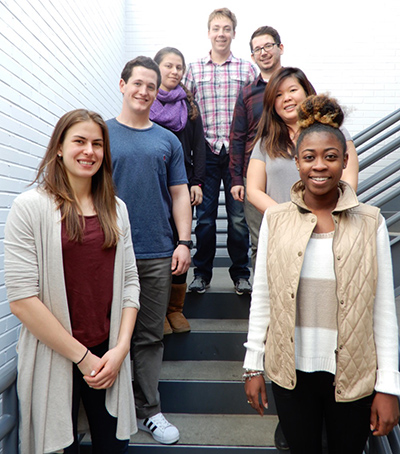Miami student finalists in U.S. Department of Energy Competition


Multi-disciplinary team designs low energy, high performance buildings
By Jeanne Harmeyer, director of marketing and communications for academic programs, CCA
A multi-disciplinary team of Miami University students was recently chosen as finalists in the 2017 U.S. Department of Energy Race to Zero Student Design Competition. Eleven students from majors including architecture, interior design, mechanical engineering and experience design make up one of 40 teams in the finals competition who will present their proposed project at the National Renewable Energy Laboratory (NREL) April 22-23 in Golden, Colorado.
The Race to Zero is an annual competition, open to students and faculty from any interested collegiate institution. The competition is based upon a real-world scenario where a builder is developing a new high performance home product line or needs to update an existing product line (house plan) to a high-performance house design. The competition encourages students to work with builders, developers, community leaders, and other industry partners to meet stringent design requirements and create marketable, affordable concepts.
The Miami team developed an off-campus 40-unit residential building for Miami graduate and nontraditional students. Their project, entitled “LoHi” stands for Low Energy and High Performance Design.
The LoHi design features multiple housing unit sizes to serve the individual needs of students of varied backgrounds and family structures, while efficiently planned common areas promote water and energy conservation, as well as interaction and development of community.
The structure employs residential sustainability while applying proven passive and active low-energy design strategies in an innovative and cost-effective combination. The result is a low-impact, high-performance multifamily housing complex that enhances quality of life and community for its residents. A few of the key strategies with the design include an array of geothermal wells with a ground-source heat pump serving individual units, PV array on roof and south-facing overhangs, and solar thermal hot water.
Mary Ben Bonham, project coordinator and associate professor of architecture at Miami stated, “the DOE’s requirement for multi-disciplinary design teams was the instigator for exciting new collaborations between architecture, interior design, experience design, and mechanical and manufacturing engineering students. Miami students are taking net zero design further than they ever have before. The architectural and mechanical systems of their design must be realistically detailed, complete with cost estimate and energy performance analysis." "This ‘pilot’ project has been successful in promoting our long-term goal for every architecture graduate to understand and measure the environmental and social impacts of their designs,” said Bonham.
Miami student participants are:

Pictured left to right: Emily Oneschuk,
Jack O’Brien, Diana Suarez, Scott Heckert,
Kevin Bechard, Lynn Belhumeur,
Lyka Williams. Not pictured: XiaoLun Chen,
Yashodhan Mandke, Jeremy Long, Yi-Fan Chen
- Lynn Belhumeur: B.A. Architecture, minors in Art & Architecture History and Management and Leadership
- Diana Suarez: B.A. Architecture, co-major in Sustainability, minor in Urban Design
- Lyka Williams: B.A. Architecture, co-major in Sustainability, minor in Urban Design
- Kevin Bechard: B.A. Architecture, minor in Sculpture
- XiaoLun Chen: B.A. Interior Design, minor in German
- Emily Oneschuk: B.S. Mechanical and Manufacturing Engineering, co-major in Russian, minor in Naval Science
- Scott Heckert: B.S. Engineering Management
- Jack O’Brien: B.S. Mechanical and Manufacturing Engineering
- Yashodhan Mandke: M.F.A. (Experience Design)
- Jeremy Long: M.F.A. (Experience Design)
- Yi-Fan Chen: M.F.A. (Experience Design)
Dennis Cheatham, assistant professor of art at Miami and faculty advisor to the group stated, “sustainability has become a huge concern for designers over the past few decades, but too often designers forget that outcomes should also meet peoples’ everyday needs in personal ways." "This project was research-informed, people-driven, and resource-conscious. By balancing all three, the team showed they have bright futures as design leaders whose work exceeds performance and personal expectations,” he said.
The student team was advised by industry partners including Heapy Engineering, Green Building Consulting, and John Hueber Homes. Miami University faculty advisors are Mary Ben Bonham and Mary Rogero (architecture and interior design), Dennis Cheatham (art), and Padmakar Niskode and John Richter (mechanical and manufacturing engineering). The project received support from the Center for Teaching Excellence in the form of a Major Teaching Project grant.

